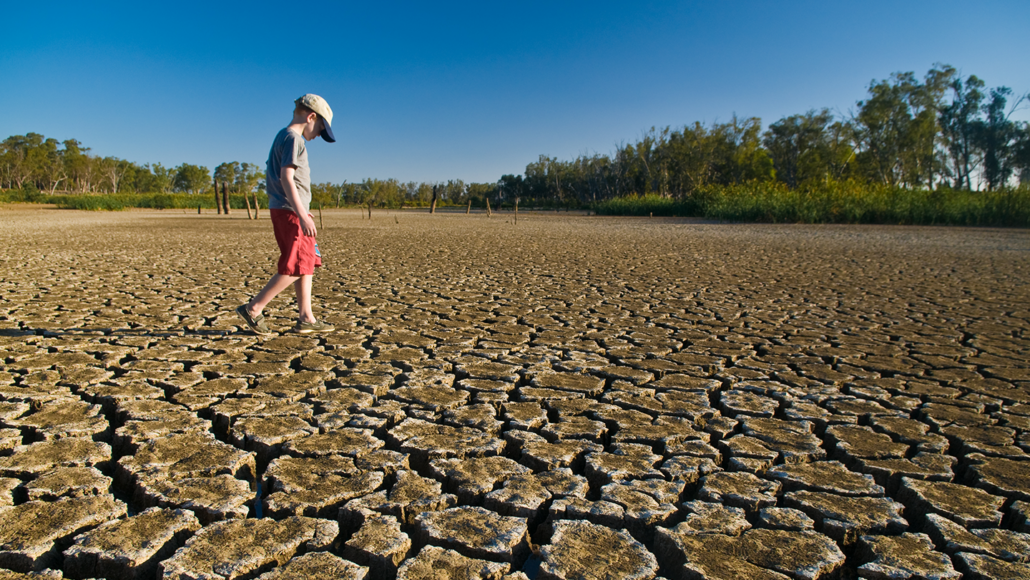Let’s learn about heat waves
Unusual heat for two or more days can spark a lot of problems

Droughts are made worse by heat waves. This make water less accessible and can dry out land, rivers and lakes.
robcruse/E+/Getty Images Plus
You probably expect summer days to be hot. But some days are hotter than others. And when unusually hot weather that lasts for two or more days, that’s a heat wave or heat event. To be considered a heat wave, the temperature needs to be higher than the historical average for the affected area. Three days of 27° Celsius (80° Fahrenheit) weather in Anchorage, Alaska, during July would be considered a heat wave. Those same temperatures in Miami, Fla., though, would be considered normal.
A heat wave usually occurs when a strong band of winds known as a jet stream moves closer to the poles. The jet stream forms where cold, polar air meets warm air from the tropics. Sometimes, large curves in the jet stream can lead to a high pressure system remaining over an area for longer than usual.
In a high pressure system, cool air sinks toward the ground. This air warms and dries as it descends. If this warm, descending flow of air keeps air near the ground from rising, it becomes a “heat dome.” This cap of hot dry air warms the surface and stops clouds from forming. Clouds help cool Earth’s surface by reflecting the sun’s rays and producing rain. Without cloud cover or storms, the trapped air can heat up to dangerous temperatures.
Heat waves can be life-threatening. These events kill more people in the United States than all other extreme weather events — such as tornados, blizzards and hurricanes. But it’s not just a U.S. problem. More than 160,000 people died from extreme heat worldwide between 1998 and 2017. Sweating is the body’s way of cooling off. Extreme heat can cause a person’s body temperature to rise faster than it can cool off. This can lead to heat-related illnesses (such as heat exhaustion and heat stroke). If untreated, this can cause damage to the body’s organs and even death. Older adults, young children and those who are sick are more at risk during heat waves.
Heat waves can contribute to droughts. Land can dry out. Water becomes less available. People may also use more water, electricity and transportation to try to stay cool. This can cause water shortages, power outages and blackouts. Farms may experience crop failure, or livestock may die. This may leave people without food and cause prices to rise.
Across the globe, heat waves appear to be happening more frequently and lasting longer. Experts say climate change is responsible for this rise in the number of heat events. Climate change is also making the air more humid. This means there is more moisture in the air. This can make it harder for people to cool off by sweating.
Want to know more? We’ve got some stories to get you started:
Climate change made 2019 European heat wave worse An intense heat spell gripped much of Europe in June. A network of climate scientists now reports finding that global warming made the event much more likely. (7/30/2019) Readability: 8.2
In blazing heat, some plants open leaf pores — and risk death Trying to keep cool in warming climates puts some plants at greater risk of drying out (1/14/2022) Readability: 6.0
New UN climate report finds no time for denial or delay It links extreme weather around the globe to Earth’s changing climate (8/12/2021) Readability: 8.0
U.S. records reveal the last 30 years were the hottest on record New ‘climate normals’ show that average temperatures increased notably just since 1990 (7/8/2021) Readability: 7.7
Explore more:
Scientists Say: El Niño and La Niña
Scientists Say: Anthropocene
Explainer: Urban heat islands and how to cool them
Explainer: Weather and weather prediction
Explainer: Winds and where they come from
Arctic warming boosts summer heat
Activities
Did you know you can make a homemade air conditioner using ice, a bowl and an electric fan? Place ice or cold water in a bowl. Next, position an electric fan behind the bowl so that the current blows over the ice. Make sure to position the fan so that it won’t fall into the bowl! This DIY trick uses evaporating water to help cool the warm air passing over the bowl.







